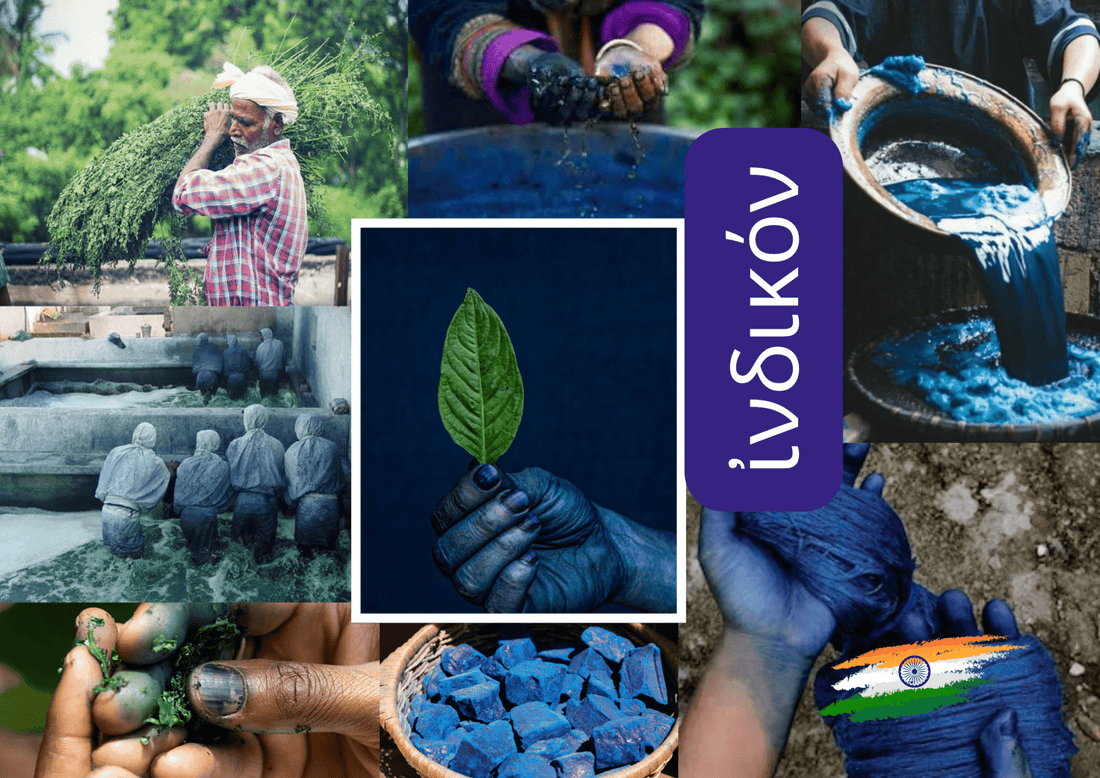
Indigo in India: The Blue Born from the Earth That Defied Empires
Remember those deep blue jeans from the 90s and early 2000s?
The ones that left stains on white T-shirts, car seats, even the lining of your bag?
It was so common, wasn’t it?
Back then, it was seen as a flaw—too much dye, synthetic or natural indigo, bleeding out everywhere.
But what if it wasn’t a flaw? What if it was just the blue reminding us it was still alive?

In India, blue stains too.
Only there, it stains with pride. It stains the hands of artisans, the feet of farmers, the clothes of those who live close to the land. It stains generations.
And that stain tells a story that began long before denim.
Where It All Began
Before fast fashion, before runways, before the very idea of "fashion" as we know it, blue was sacred.
In ancient India, cultivating natural indigo was part of a cycle that wove together nature, patience, and wisdom.


The Indigofera tinctoria plant thrived in fertile soil under the scorching sun. Once harvested, it was left to ferment in vast vats of water and ash. The mixture became a living dye—a vat dye—and working with it required a delicate touch.
The most magical part?

The cloth emerges from the dye bath green.
But as it meets the air, it oxidises and transforms into blue before your eyes—as if breathing, as if being born right there.
In many Indian villages, this process is still done by hand. Men step barefoot into the vats, stirring fabric with their feet, arms submerged in the dark liquid. When they emerge, their skin is stained blue—as if carrying the very history they’ve helped dye.

Long Before Denim:
The Blue That Protected, Honoured, and Connected
In India, blue was more than decoration.
It was part of spiritual rituals, worn by the lowest castes and mystics alike—a colour of humility, of connection to the sacred and the earth.
It dyed saris, turbans, and cloth for offerings.
Some believed it warded off the evil eye, shielded against negative energy. It was used in purification ceremonies and in the clothes of farmers and craftsmen—a colour both simple and noble.
How Was Indian Indigo Different?
While India was the birthplace of Indigofera tinctoria and large-scale natural dyeing, other cultures developed their own methods:

Japan: Used Polygonum tinctorium (ai), fermented with rice, sake, or wheat bran. The dyeing process was tied to wabi-sabi—beauty in imperfection. Explore more.

China: Also used Indigofera, but combined it with intricate block-printing (Lan Yin Hua Bu). Blue symbolised protection and longevity. Explore more.

West Africa: Used local plants and mud-dyeing (bogolanfini), creating patterns tied to strength and fertility. (The next blog post is coming soon!)
India, though, was the heart of indigo for centuries—not just producing it, but trading it worldwide. Its name itself comes from the Latin indicum, meaning "from India." The Greeks called it indikon—the deep blue from the East.
When we say "indigo," we’re literally saying "India’s blue."
Resistance in Blue: From the Earth to Empires

Under British rule, indigo became a tool of exploitation.
The English saw India as a goldmine—or rather, a bluemine.
They forced mass indigo cultivation, often violently, stripping communities of control over their own land.
Thousands of farmers were made to grow indigo instead of food. When they resisted—like in the Indigo Revolt (1859-60) in Bengal—they were met with brutality.
Yet the blue survived.
Because it was never just a commodity—it was culture, faith, roots.
A Blue That Lives On Skin and in Time
Today, India still keeps this knowledge alive.
In Rajasthan, Gujarat, and Bihar, families preserve ancient techniques—block printing, resist dyeing, hand-tied patterns—always with natural indigo at the centre.

This blue isn’t just beautiful. It’s biodegradable, antibacterial, insect-resistant—and it ages like fine wine. Unlike synthetic dyes, natural indigo grows richer with time. The more you wear it, the more it tells its story.
A Blue That Carries Memory
At Denimoz, we honour indigo's legacy in our own way.
While we don't use traditional dyeing methods, our tees bear prints that tell the remarkable story of this ancient blue.
When you pair one of our shirts with your favourite jeans, you're not just wearing blue.
You're wearing memory. You're wearing history. You're wearing meaning.
Because that blue that once stained your clothes?
Truth be told— it was simply trying to remind you where it came from.
By Kiki

